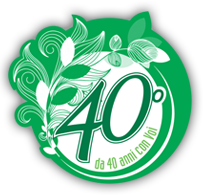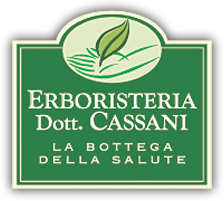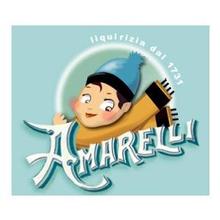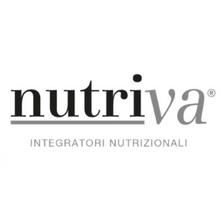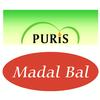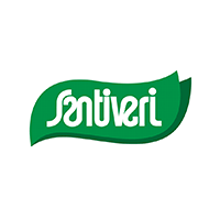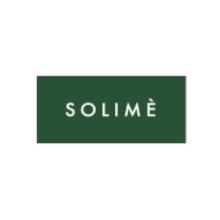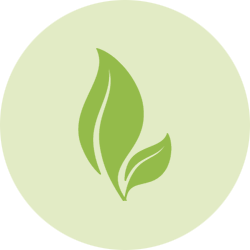Colostro Bovino
La ricerca medico-scientifica ha dimostrato che i composti chimici del colostro ottenuto dalle mucche da latte sono identici ai componenti chiave nel colostro umano.
Il colostro è un siero concentrato presente nel latte vaccino le 24 ore successive la nascita di un vitello, in questo arco di tempo, una mucca produce 40 litri di colostro.
Il vitello richiede 18 litri per le sue esigenze di crescita, i restanti 22 litri vengono prelevati e conservati ad una temperatura di -10° gradi, per presevare le caratteristiche nutritive.
Così congelato il colostro potrà resistere inalterato sino a 15 anni.. Solamente le mucche da latte ,allevate allo stato brado, in pascoli esenti da trattamenti chimici, monitorizzate attraverso rigorosi esami clinico -veterinari, daranno il colostro ad uso alimentare umano.
Il colostro bovino congelato viene trasportato all'impianto di lavorazione dove , per tappe termiche progressive, si eseguono controlli sulle caratteristiche nutritive di ogni sostanza .
Circa il 25-30% del colostro prodotto viene scartato , perché non corrisponde ai parametri richiesti costituiti dal livello di immunoglobuline,viene poi essiccato in forni particolari e ridotto in polvere.
Come Funziona?
È l'unico integratore naturale che contiene:
• Fattori multipli di sviluppo, come il fattore di sviluppo (IGF-1)
• Fattori immunitari
• Lattoferrina
• Tutte le vitamine essenziali, minerali, amminoacidi
• Fattori di sviluppo
• Promuove la guarigione delle ferite e la riparazione dei tessuti
• Controlla il livello ematico degli zuccheri
• migliora lo smaltimento della massa grassa
• Stimola la riparazione e la rigenerazione di: muscoli, ossa, cartilagine, tessuto nervoso.
ALTRI COMPONENTI
FATTORI IMMUNITARI
• IgG- aumentano la fagocitosi per neutralizzare le tossine (80-85% del siero totale).
• IgA- proteggono le superfici mucose (circa 15%).
• IgM- aumenta la fagocitosi, particolarmente contro i microrganismi (5-10%),
• IgD- stimola le B-cellule per produrre gli anticorpi (2%).
• IgE- Associati alle reazioni allergiche (002%).
• Fattore di stimolo alla sintesi delle IgA (sIgA)
• B lattoglobulina, lattoalbumina (La lattoalbumina colostrale è in grado di causare la morte selettiva delle cellule cancerogene, lasciando i tessuti circostanti inalterati), albumina, prealbumina, Alfa 1-antiripsina
• Alfa 1- fetoproteina, alfa 2-macroglobulina, Emopexina, Haptoglobina.
• Beta 2- microglobulina
• Citochine: interleuchina 1, 6 e 10, gammainterferone, (TNF) fattore di necrosi tumorale
• Lattoperossidasi, xantinossidasi, tiocianossidasi, potenti antibatterici, grazie alla loro capacità di produrre
Perossido d'idrogeno
• Inibitori della tripsina e delle proteasi.evitano la distruzione dei fattori di crescita e immunitari presenti nel colostro durante il transito digestivo, proteggono le pareti dello stomaco da eventuali attacchi dell'H.pilori.
• Lattoferrina, (Una delle cause principali di deficit immunitari è la carenza di ferro. La lattoferrina è una proteina che permette l'utilizzo ottimale del ferro; in più, la lattoferrina è egualmente un antibatterico potente e un agente antivirale ), linfochine, ( proteine ormone simile che attivano i linfociti ) lisozima( enzima idrolizzante capacedi distruggere i batteri per contatto ed ha inoltre la capacità di stimolare il sistema immunitario)
• ( PRP).Anticorpo polipeptide Prolina ricco. Molto probabilmente svolge un ruolo di regolazione sull'attività del Timo, può aiutare a calmare un sistema immunitario iperattivo o stimolare un sistema immunitario ipoattivo,
• Alfa 2-glicoproteina, AP glicoproteina. Inibitrici delle proteasi che aiutano le immunoglobuline a rimanere integre durante i processi digestivi
• Contiene inoltre un largo spettro d'anticorpi per protozoi, lieviti, batteri, virus
FATTORI DI CRESCITA
- (IgF-1 e IgF-2 ) Fattore di crescita insulino-simile
- (TgFA e TgFA ) Fattore di crescita A e B
- (EgF) Fattore di crescita epiteliale
- (FgF) Fattore di crescita fibroblastica
- Prolattina, gonadotropina RH
- Insulina(GH) ormone della crescita
Spettro d'azione
La caratteristica delle immunoglobuline colostrali è quella di rimanere molecolarmente intatte mentre transitano attraverso il sistema digestivo grazie alle glicoproteine cui sono legate, ciò permette agli anticorpi di svolgere la loro azione difensiva poiché la maggior parte delle malattie contagiose hanno origine viscerale.
Il colostro aumenta la popolazione intestinale sana della microflora, migliora l'utilizzo dei nutrienti contenuti negli alimenti e fornisce un' ambiente sfavorevole per gli agenti patogeni enterici.
In base a queste caratteristiche l'utilizzo di colosto bovino può prevenire attachi da eventuali batteri, miceti, virus presenti a livello intestinale.
Il colostro bovino risulta utilie per le diete finalizzate al controllo del peso.
Il Dott. Jorgensen svedese ha verificato l'effetto dell'ormone della crescita sugli adulti che hanno visto una riduzione della massa grassa e un corrispondente aumento della massa rossa muscolare.
Da ulteriori studi sembra che l'ormone della crescita stimoli la produzione IgF-1 ( contenuto nel colostro), che favorisce la via energetica di ossidazione dei grassi invece di quella del glucosio per produrre energia.
Malattie virali
Circa il 75% degli anticorpi del nostro sistema difensivo sono sintetizzati nell'intestino crasso.
Studi recenti hanno dimostrato come il colostro bovino favorisca "una restituito ad integrum" dell'apparato intestinale e rinforzi l'attività immunitaria dell'intero sistema.
Allergie e malattie autoimmuni
Grazie alla sua attività regolatrice sulla funzione timica ( PRP ), il colostro bovino allevia la sintomatologia debilitante in molte patologie autoimmuni ( fibromialgia, artrite reumatoide, lupus, ...), diminuendo l'iperisposta immunitaria.
Diabete
Una delle ipotesi sulla genesi del diabete giovanile ( diabete di Tipo 1, insulino dipendente) è quella che sia legato ad un meccanismo autoimmune, iniziato come una reazione allergica alle proteine GAD presenti nel latte vaccino. I fattori di crescita presenti nel colostro ( IgF-1 ed insulina ) ottimizzano il metabolismo del glucosio, agendo sull'iperglicemia acuta
In sintesi:
- Rigenera e accelera i processi riparativi di muscoli, ossa, cartilagini, del collagene della pelle e del tessuto nervoso.
- Favorisce l'utilizzo dei grassi nel metabolismo energetico (diete ).
- Agisce sugli acidi nucleici riparandoli
- Bilancia e regola il metabolismo degli zuccheri nel sangue.
- Favorisce, per uso esterno, la guarigione di ferite, tagli, abrasioni, bruciature.
- Controlla le infezioni e il dolore che sono spesso associati a cure dentistiche.
- Favorisce lo stato di veglia e la concentrazione migliorando i livelli di zucchero cerebrali.
- Ottimizza i livelli di serotonina e dopamina, equilibrandoli, favorendo un umore più stabile e gioviale.
DOSAGGIO:
Il colostro va assunto a stomaco vuoto almeno trenta minuti prima dei pasti o almeno due ore dopo.
Il dosaggio minimo è di 3 grammi ( 8 capsule)al dì sino a 6 grammi (16 capsule).
Dosaggio pediatrico: fino a7 anni (1/3 della dose degli adulti) oltre i 7 anni fino ai 14 anni, metà dose degli adulti.
All'inizio è meglio iniziare con dosi massicce, a risultato ottenuto, ottemperare per un dosaggio di mantenimento.
Molte volte, ( nel 40% dei casi )dato la forte azione detossicante e rigenerante, all'inizio dell'assunzione, possono apparire sintomi, come nausea, eruzioni cutanee, riniti, risveglio di vecchi dolori, cicatrici, sintomi passeggeri che spariranno in pochi giorni.( Effetto Herximer ).
Per gli atleti, onde incrementare la massa muscolare e la resistenza allo sforzo, è consigliabile assumere circa 6 grammi
Mezz'ora, quarantacinque minuti prima dell'allenamento con abbondante acqua.
Il colostro bovino è un cibo, e, come tale non ha mai fatto registrare effetti collaterali o interazioni con farmaci.
Nonostante ciò, in gravidanza, è meglio consigliarsi con il proprio medico.
Le persone allergiche al lattosio non hanno mai manifestato sintomatologie allergiche verso il colostro.
L'associazione FDA ( Food & Drug Administration ) ha espresso parere favorevole nell'uso del colostro.
ABSTRACTS
Immune Factors: Research Related To.
Sabin, Albert B. 1950, Journal of Diseases of Children, 80, p.866; "Antipoliomylitic Substance in milk from Human Beings and Certain Cows." As early as 1950 Dr. Albert Sabin, a discoverer of polio vaccine, reported in antipolio substance in the milk of cows, despite the fact that cows do not get poliomyelitis.
Sabin, Albert B. et al., 1962, Pediatrics, 29, pp. 105-115. "antipoliomylitic activity of human and bovine colostrum and milk"; Dr. Sabin isolated antipolio antibodies in bovine colostrum. (Bovine colostrum was used in oral administration successfully. Antibodies were isolated and a successful vaccine prepared.
Samson, R.R., et al., Immunology, 1975 Vol 38, No. 2, 291-296. Dr. Samson and associates found colostrum was 21 times richer in vitamin B-12 that milk. Research in 1975 confirmed that adequate B12 in body doubles body's immune system's ability to fight disease.
Ho, Lawton, 1978 Human Colostral Cells, Journal of Pediatrics Vol. 93, No. 6 pp 910-915 in hospital use showed that colostrum Leukocytes are effective against E. Coli and the yeast Candida Albicans.
Lawton, et. al., 1979, Archives of Disease in Childhood, 54, pp 127-130; "Interferon Synthesis by Human Colostral Leukocytes"; Exposure of Colostrum leukocytes to certain mitogens stimulated production of interferon, the substance that slows or prevents viral growth.
Lundenberg, et. al., W. B. Saunders Co. 1991: Growth Hormone improves Muscle Protein Metabolism"; "Human study indicated GH prevented catabolism in muscle and improved whole body nitrogen economy. Investigations of the possible beneficial effects of GH to prevent skeletal muscle deterioration after surgical trauma are advocated."
Chaumeil, Liolet, Kogbe, 1994, Adv. Exp. Med. Biol. Report of clinical study Vol. 350 pp. 595-599; Reported effective treatment of eye infections with bovine colostrum lactoserum i.e.: reduction in glaucoma, scaring after injury or surgery, reduction in eye lesions.
Xu, Mardell et. al., Immunology 1995 vol 85 p 394-9: Expression of function IgF-1 receptor on lymphoid cells: "Our studies suggest that biological activities of IgF-1 include direct stimulation of immune cells and that expression of IgF-1 receptor may have a role in the regulation of T-cell function."
Rosenthal, Brown, Brunetti and Goldfine, Dept. of Pediatrics, Univ. of California, SF Div. of Diabetes and Endocrine Research, Mount Zion Medical Center, Univ. of Ca., SF. A. Presence of FGF (Fibroblast Growth Factor) (in bovine colostrum) inhibits IGF-II's ability to decrease IgF-1 receptors in muscle tissue resulting in a 60-70% increase in IgF-1 binding
Francis, Upton, ballard, McNeil, 1988, Journal of Biochemistry, Vol. 251: 95-103 (printed in Great Britain): "Insulin-like Growth Factors 1 & 2 in Bovine Colostrum"; Two growth factors similar to insulin were purified from bovine colostrum IgF-1 found to be identical to the corresponding human growth factor. In this experiment, protein synthesis was increased and protein breakdown was reduced by administration of the bovine colostrum extracts.
Oda, Shinnichi, et. al., 1989, Comparative Biochemical Physiology, A: Comparative Physiology, Vol. 94A No. 4 pp 805-808: "Insulin-Like Growth Factor 1, GH, Insulin and Glycogen Concentration in Bovine Colostrum and in Plasma of Dairy Cows"; Bovine colostrum contains high levels of growth factors that promote normal cell growth and DNA synthesis.
Tollefsen, Lajara, McCusker, Clemmons, 1989, Journal of Biological Chemistry, Vol. 264 No. 23, Aug. 15: "Insulin-like Growth Factors (IgF) in muscle development"; IgF's role in differentiation, repair, synthesis, and their interplay with other necessary growth factors. IgF-1 only factor that can stimulate muscle growth and repair by itself. Eliminates catabolism and stimulates anabolism at the cellular level.
Marcotty, et. al., Growth Regulation 1991 Longman Group UK: "IgF-1 from cow colostrum: Characterization"; IgF-1 potent stimulator of growth and differentiation of numerous cell types. Bovine sequence identical to Human IgF-1.
Shawn, D. 1992, Ironman, Aug. Article on positive effects of growth factors in bovine colostrum with weight lifting and athletic endurance. "Only native and conformationally intact Lactoferrin from bovine colostrum or human milk could completely block Cytomegalovirus infection. Moreover, native Lactoferrin also inhibited the HIV-1 induced cytopathic effect. When negatively charged groups were added to Lactoferrin by succinylation, there was a 4-fold increased anti-viral effect on HIV. Lactoferrin likely exerts its effect at the level of virus absorption or penetration (or both), because after cytomegalovirus penetrated cellular tissue, the ongoing infection could not be further inhibited."
FATTORI DI CRESCITA: implicazioni fisiologiche
Klagsbrun, 1978, Proceedings of the National Academy of Sciences, V. 75, p 5057-5061, "Human Milk Stimulates DNA Synthesis and Cellular Proliferation in Cultured Fibroblasts"; Growth Factors in milk showed 100 times the potency of serum when tested on fibroblasts.
Gil, Angel, Sanchez-Medina, 1981, Journal of Dairy Research, Vol. 48, Vol. p 35-44, "Acid Soluble Nucleotides of Cow's, etc."; Bovine colostrum was found to contain seven different nucleotides which are important for normal cell function and repair
Ballard, Neild, Francis, et. al., 1982, Journal of Cellular Physiology, V 110, P 249-254, The Relationship Between the Insulin Content and Inhibitory Effects of Bovine Colostrum on Protean Breakdown"; Insulin-like ingredient in bovine colostrum (IgF-1) slows protein breakdown. Protein breakdown was also slowed by addition of colostrum to a cell line known to be unresponsive to insulin, indicating the presence of non-insulin growth factors in bovine colostrum.
Sporn et. al., 1983, Science, V 219 p 1329-31: "Polypeptide Transforming Growth Factors (TGF A & B) and Epithelial Growth Factor Isolated from Bovine Colostrum Used for Wound Healing in Vivo"; Growth factors in bovine colostrum were found to be very effective in promoting would healing. Implications for trauma, and surgical healing. External and internal applications implied.
Francis, 1986, Biochemical Journal, 233(1) p 207-213; "Purification and Partial Sequence Analysis of Insulin-like Growth Factor 1 from Bovine Colostrum"; Showed Bovine IgF-1 to be identical to human IgF-1. Described purification process for extraction of IgF-1 from colostrum
Roberts, Sporn, Assoian, et. al., 1986, Procedures of the National Academy of Sciences, V. 83 p 4167-71: "Transforming Growth Factor Type B: Rapid Induction of Fibrosis and Angiogenesis in Vivo and Stimulation of Collagen Formation in Vitro"; Ristow, et al., p 5531-5533 Reports BSC-1 growth inhibitor type B transforming factor in a strong inhibitor of thymocyte (T-lymphocyte precursor) proliferation (presence in bovine colostrum confirmed: Noda, 1984).
Flanigan, Marshall, Redman, Kaetzel, Ungar, 1991) Journal. Protozool Nov-Dec. Vol. 38(6), p 225-227. A. Diarrhea producing Cryptosporidium parvum infection treated effectively with oral ingestion of bovine colostrum. B. Also effective in treatment of prophylaxis and rotavirus gastroenteritis.
Jage, Kampmann, Kolb, et. al., 1992, Clin. Investigation Jul.; 70(7) p 588-94 Reported: A. Immunoglobulins from bovine colostrum (lactobin biotect) contain high titers of antibodies against a wide range of bacterial, viral and protozoa pathogens, as well as against various bacterial toxins. B. Lactobin quite resistant to gastric acids. C. Effective in the treatment of opportunistic infections that cause diarrhea. Treatment and effectiveness in AIDS patients verified, where no other treatment was effective.
Rump, et. al., 1992, Clinical Investigator, Vol. 70, p 588-94: Treatment of Diarrhea in AIDS and bone marrow transplant patients with Bovine Colostrum: Reported colostrum quite resistant to gastric juice. Oral treatments very effective. No side effects.
HERPES VIRUS : ricerche correlate
Rouse, B. T. et. al., 1976, Infection and Immunity, V. 13 p 1433: "Antibody-dependent Cell-Mediated Cytotoxicity in Cows: Comparison of Effector Cell Activity Against Heterologous Erythroctye and Herpes-Virus-Infected Bovine Target Cells"; "Bovine leukocytes have antibody dependent cell-mediated cytotoxicity against bovine herpes virus." Bovine Colostral cells with antibody were able to kill cells infected with herpes simplex in vivo.
Kohl, S. et. al., 1978, Journal of Clinical Laboratory Immunology, Vol 1, p 221-224. "Human Colostral Cytotoxicity: Antibody-Dependent Cellular Cytotoxicity Against Herpes Simplex-Infected Cells Mediated by Colostral Cells"; Colostral cells along with antibody were found to destroy herpes simplex-infected cells.
CANCRO : ricerche correlate
Tokuyama, et. al., 1990, Dept. of Molecular Immunology, Cancer Research Institute and Dept. of Nuclear Medicine, Kananawa University, Kananawa, Japan. Harwood Academic Publishers, UK; Reported two new Proteins discovered in Bovine Colostrum; BC-1 BC-2. Belong to a new class of mitogenic inhibitors. Reported that through biological activities resemble TgF-B. Showed inhibitory effect on some sarcoma (cancer) tumor cell lines in _sutro.
Tokuyama and Tokuyama, 1993, Jour. Dairy Res. Vol. 60, p 99-109 (Printed in Great Britain) Dept. of Nuclear Medicine, Fac. Med. Dept. Mol. Imm. Cancer Research Inst. Kanazawa Univ. Japan.
Reported: A. Bovine Colostrum contains TgF-B. B. Excerpts positive regulatory effects on accumulation of extracellular matrix proteins. C. Suppressive effect on cytoxic monocytes. D. Potent inhibiting effect on the generation of cytoxic T-Lymphocytes, NK and LAK cells. E. Anti-inflammatory. F. Inhibits anchorage-dependent cell growth of human Osteosarcoma (cancer) cells (75% inhibition). G. Mediator of fibrosis and angiogenesis (Roberts et. al., 1986), wound healing (Sporn et. al., 1983) and bone formation (Centrella et. al., 1987).
Wada, et. al., 1980, Infection and Immunity, V. 29, P 545-550. "Neutralizing Activity Against Clostridium Difficile Toxins in the Supernatants of Cultured Colostral Cells"; Colostrum immune factors neutralize crude toxins.
Business Week, Feb. 6, 1995: "Quite Strides in the War on Cancer"; National Cancer Institute researcher Seven A. Rosenberg became a media sensation when he achieved success with cancer patients in 1985 using an experimental technique called immunotherapy. Since cancers can invade the immune system, why not load the body with killer immune cells, along with special chemical messengers called Cytokines that give the body an extra kick." Treatments partially successful. More trials ongoing. Cytokine for cancer vaccines is the largest single protocol under study today
RELAZIONI CON IL SISTEMA IMMUNITARIO : allergici, diabetici, malattie autoimmuni
Tortora, Funke, Cast. 1982, Microbiology, Published by Benjamin/Cumming p 403-405. "Specific defenses of the host Immunology"; B-cells of the immune system produce immunoglobulins/antibodies. The IgE (immunoglobulin) thought to be responsible for regulating allergic response. IgE found in Bovine colostrum.
Crago, Mestecky, 1983, Survey of Immunology, Res., Vo. 2 No. 2 p 164-169: "immunoinhibitory Elements in Human Colostrum"; (A protein substance was found in colostrum which inhibits the overproduction of lymphocytes stimulated by antigens and mitogens and may reduce symptoms associated with allergic reactions.)
Staroscik, et. al., 1983, Molecular Immunology, Vol. 20 No. 12 p 1277-82: Dr. Staroscik and associates at the Institute of Immunology at Wroclaw, Poland, discovered a small protein chain polyprotein-rich Peptide (PRP) of 9 amino acids in colostrum. This chain has the same ability to regulate the activity of the immune system as the hormones of the thymus gland. It activates an underactive immune system, helping it move into action against disease-causing organisms. PRP also suppresses an overactive immune system such as is often seen in the auto-immune diseases. PRP is highly anti-inflammatory and also appears to act on T-cell precursors to produce help T-cells and suppressor T-cells. The effect is similar to that of thymus hormones.
Newsweek, Nov. 15, 1993, p 73: A new way to fight Diabetes: Researchers at UCLA and Stanford have diabetes' cause by an allergic reaction to a protein called GAD, immune systems in diabetics turn against other antigens as well. A single injection produced tolerance to GAD in mice eliminating the diseases process."
Janusz, Lisowski, 1993, Arch. Immunol. Ther. Exp. Warz. Vol. 41(5-6) p 275-9. Report on Clinical Study. A. New immunomodulatory peptide found in bovine colostrum: Proline-rich Polypeptide (PRP). B. Not Species specific ) transferable to human use). C. PRP increases permeability of skin vessels. D. Causes differentiation of murine thymoctyes into functionally active T-cells. E. Simultaneously changes surface markers and function of cells. F. Results shown in treatment of autoimmune disorders and sarcoma S-180 (cancer). G. Important immune modulator: simulates underactive immune system, tones down an overactive one.
Dohm, Elton, et. al., Diabetes, Sept. 30, 1990 p 1028-32: "IgF-1 Stimulated Glucose Transport"; IgF-1 stimulates glucose utilization. IgF-1 found in bovine colostrum (identical to human) can provide an effective acute treatment for Hyperglycemia. IgF-1 can be an effective alternative to insulin in stimulating transport in diabetic muscle. Plasma levels of IgF-1 in diabetic patients are lower than in non-diabetic groups. IgF-1 receptors present in human muscles. IgF-1 binding is 24% that of insulin IgF-1 stimulated glucose transport twofold. Did not stimulate transport in obese subjects."
LACTOFERRINA
Walker, Townsend Letter for Doctors, Aug. 1995, p 42-45; "Infectious bugs are back but there's a remedy"; The very technology that saves people's lives sets them up for infection, says Robert Haley, MD, Head of the Epidemiology and Preventative Medicine at University of Texas in Dallas. Antibiotic resistant organisms are an integral risk of any infection. After forty years of aggressive antibiotic abuse, physicians are now confronting bacteria that have mutated defenses against drugs causing deaths of patients who succumb to once treatable invasions. Even with the thirty or so antibiotics the drug companies claim to be working on there are no more potent antibiotics left to treat these drug resistant bacteria. The only viable answer are natural remedies comprised of antimicrobial cationic proteins that stimulate the immune system, to be capable to defend against the super mutants and others. Lactoferrin is one of the strongest and most active. (Lactoferrin is an abundant protein in colostrum) that works at the mucosal surface. Lactoferrin is: 1) iron binding that deprives bacteria of this essential growth mineral (nearly all bacteria cannot grow without iron); 2) it is also directly antibacterial through systemic immune responses, 3) has a high affinity N-terminus for binding directly and inactivating bacteria by increasing bacterial membrane permeability so that it can be neutralized by the body's natural immune functions. High affinity Lactoferrin receptors have been identified on most immune cells: Lymphocytes, monocytes, macrophages, and platelets. It is thought to regulate Cytokine release. Lactoferrin is highly resistant to digestion and passes intact to intestine where it does its work.
Spik, Genevive, et al., 1983, Immunology, Vol. 35 No. 4 p 663-670: "Bacteriostasis of a milk-sensitive Strain of E. coli by immunoglobulins and iron-binding proteins in association"; French doctors showed that a combination of IgG and Lactoferrin in colostrum was bacteriostatic for E. coli.
Hamilton, Whitney and Sizer, 1985, Nutrition: "Concepts and Controversies"; West Pub. (nutritional textbook): (Bovine) Colostrum contains a bifidus factor that favors the growth of friendly intestinal bacteria. Also contains huge counts of active Lactobacillus Bifidus. Also reported that Lactoferrin in colostrum keeps invading bacteria from getting iron needed to reproduce.
Ushijima et al., Dept. of Enteroviruses, Japanese National Health Institute, Jan. 1991 V 65(1) p 54-60; "Bacteriostatic activity of bovine colostrum"; Immunoglobulin, Lactoferrin-Fe tested using the automated antimicrobial susceptibility testing system. Lactoferrin was found to be an even more effective antibacterial than immunoglobulin. (Immunoglobulin is more effective against viruses). The results indicated that all three had significant bacteriostatic action."
Brodie, Ainscough, et al., Adv. Exp. Med. Biol. 1994, V357 p 33-44; "Synergism and substitution in the lactoferrins: The anion binding properties of human Lactoferrin Oxalate and hybrid complexes exist in the human body"; Oxalate can displace carbonate from either on or both anion sites depending on the oxalate concentration, but no such displacement occurs for Fe2 although it does for bovine Lactoferrin.
Bocci, Bremen, Corradeschi, Luzzi and Paulesu, 1991, Journal Biology Regul. Homeost. Agents Oct-Dec 5(4) p 121-4. REPORTED: A. Immunoglobulins cannot be received through the placenta. B. Colostrum has a well acknowledged crucial value for the survival of animal species. C. Presence of 4 Cytokines verified in bovine colostrum: Interlukin 1 & 6, tumor necrosis factor, and interferon gamma. D. Exert an important immunostimulatory role particularly on the oropharyngeal-associated lymphoid tissue. E. Administration can provide benefits in aged or immunodeficient people. F. Nature has used the oral route for the development of the immune system since the origin of mammals (safe and effective). G. Oral administration of Immunofactors is very simple, inexpensive, free of side effects and may vastly be beneficial in veterinary and HUMAN medicine to correct immunodeficiency
Jage, Kampmann, Kolk, et al., 1992, Clin. Investigation Jul. 70(7) p 588-94; Reported: A. Immunoglobulins from bovine colostrum (lactobin biotest, Dreieich, FRG) contain high titers of antibodies against a wide range of bacterial, viral and protozoa pathogens, as well as against various bacterial toxins. B. Lactobin quite resistant to gastric acids. C. Effective in the treatment of intestinal opportunistic infections associated with HIV and other immunosuppressed disease.
Quigley, Martin, et al., J. Dairy Sci. Jan. 1994, Vol. 77(1) p 264-9; Immunoglobulin concentration in cow's colostrum: IgG 65.8 IgM 2.4 and IgA 1.7 g/l.
Nota bene
Non esiste garanzia di riscontro tra le informazioni sull'ingrediente riportate in questa scheda e le reali attività esplicate sull'organismo umano dall'ingrediente stesso nonché dagli eventuali preparati contenenti tale ingrediente.
Le piante, i prodotti erboristici e gli integratori alimentari non sono medicinali ne prodotti curativi e pertanto non v'è dimostrazione scientifica riconosciuta di loro eventuali proprietà terapeutiche o della loro capacità di cura delle malattie umane.
Le informazioni qui riportate non devono servire per assumere decisioni in merito al proprio stato di salute o ad eventuali terapie mediche, ed in nessun caso sono da intendersi come sostitutive a cure mediche o all'assunzione di farmaci.
Gli integratori non sostituiscono in nessun caso una dieta equilibrata ed uno stile di vita sano e controllato.
In caso di disturbi, patologie o allergie consultate sempre il vostro medico curante.
*Le informazioni riportate fanno riferimento alla letteratura erboristica la cui bibliografia è visibile al seguente link
